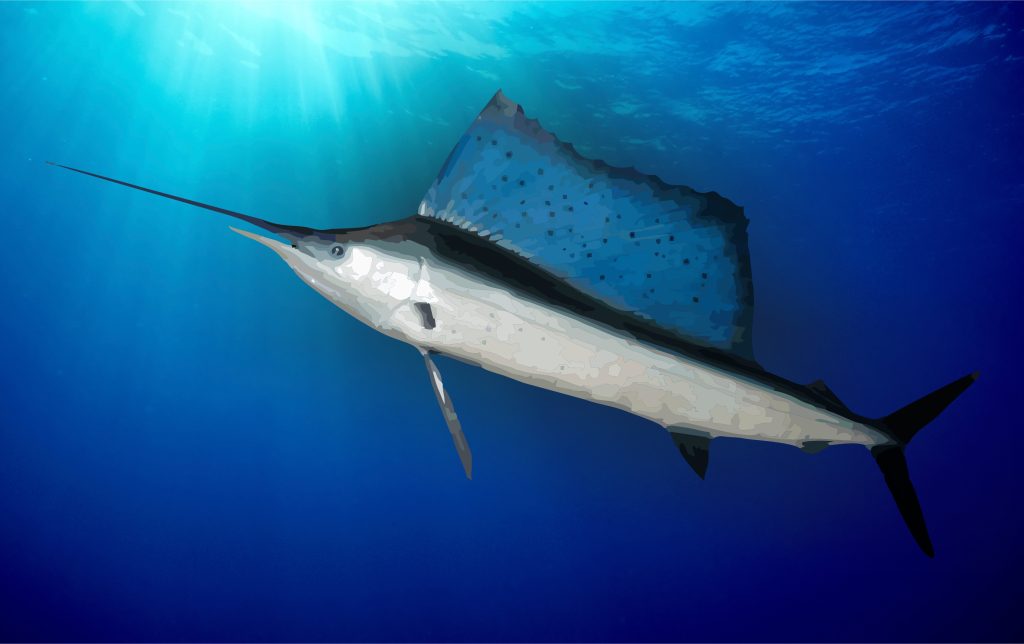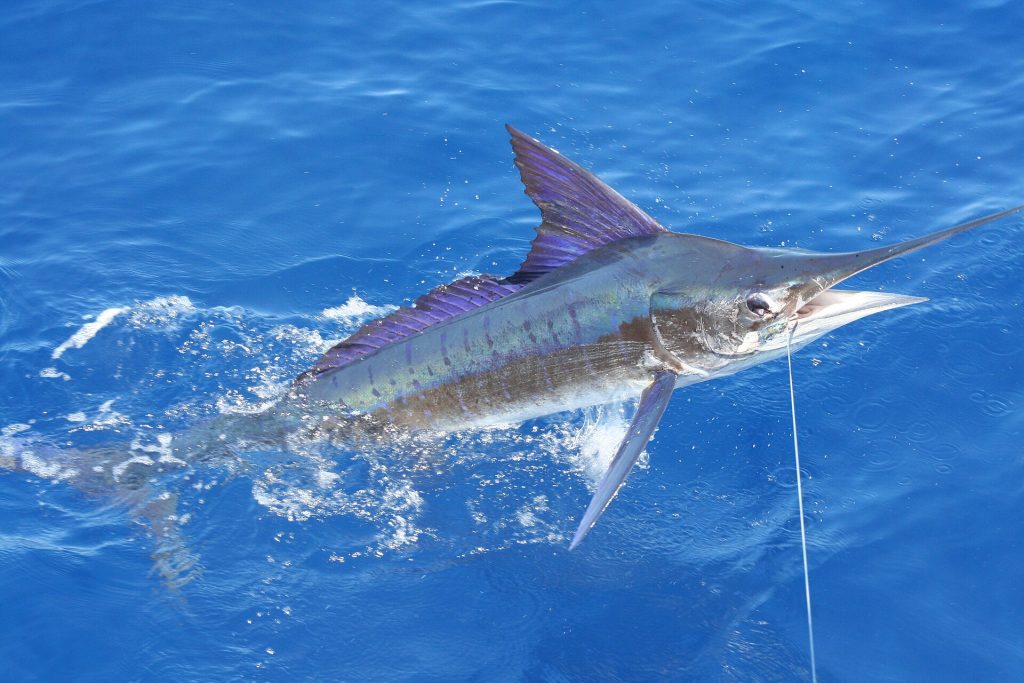 Marlin Fishing: the Holy Grail of Sport Fishing. Trolling Lures for Marlin is technical and attention to detail is of critical importance if you want success, it is also one of the most effective ways to target all the Marlin species.
Marlin Fishing: the Holy Grail of Sport Fishing. Trolling Lures for Marlin is technical and attention to detail is of critical importance if you want success, it is also one of the most effective ways to target all the Marlin species.
In our Indian Ocean waters we get 3 species of Marlin.
- Blue Marlin – Makaira mazara / nigricans
- Black Marlin – Istionpax indica
- Striped Marlin – Kajikia audax
We also get another 3 species of Bill Fish in our waters:
- Short Billed Spear Fish – Tetrapturus angustirostris
- Indo-Pacific Sail Fish – Istiophorus platypterus
- Broad Bill Sword Fish – Xiphias gladius
Hunting the 3 Marlin Species
A “Grander” is considered to be a Marlin 1000lb. (455kg.) and over, although they have been caught in our waters it is not the norm as most our Marlins are smaller, in Autumn we do have Grander size Blue Marlin around in our waters.
Trolling is what we call pulling lures behind the boat, Trawling is dragging nets behind the boat and I grit my teeth every time I hear someone call this kind of fishing trawling, if you going to do it at least know how to say it and spell it correctly, otherwise you are insulting the art.
I have very simple rules for fishing:
- You cannot catch a fish if your line is not in the water.
- Don’t lose a good fish because of a bad knot.
- Attention to detail, as success is always in the smaller details.
- Be completely aware of your surroundings and environment at all times.
- Keep it simple.
- Know your routines well
Blue Marlin
The Indo-Pacific Blue Marlin commonly referred to as a “Blue” found on our waters are usually referred to as Makaira mazara, however there are many arguments that this species is in fact the same as the Atlantic Blue Marlin, Makaira nigricans.
I am not a Marine Biologist or Scientist and to me it is simply a Blue Marlin. A female Blue Marlin can grow to be four times the size of the male, and the Blue Marlin is the largest of all Marlins.
The bill is fairly thin, and the head is higher compared to other marlins, the dorsal fin has a fine point and its height is about half that of the width of the fish. The pectoral fins can close and fold flat against the body.
Blue Marlin can light up when you get them to the boat, and this often gets them confused with Striped Marlin.
The Blue Marlin is an open water fish and one will find them at depths of over 400m. and passed the continental shelf, they mostly feed near the surface. Blue Marlin will often fight deep and then tire themselves out quicker than other Marlins.
Black Marlin
The Black Marlin, Istionpax indica, commonly referred as a “Black” is the fastest of all the Marlins. The pectoral fins are rigid and curved, and it is the only Marlin whose pectoral fins do not fold flat against the body.
The Black Marlin has a somewhat stocky body which is shorter and thicker than the other Marlins. It also has a shorter bill which is thicker. The dorsal fin is short and rounded on top. The body is dark on top and very light under with a very distinct line between the two colours.
The Black Marlin likes to hunt around reefs and structure and is usually caught in waters from the shallows up to 200m deep.
Striped Marlin
The Striped Marlin, Kajikia audax, commonly referred to as a “Stripey” is a leaner fish, and has a much larger tail in proportion to its body when compared to the other two Marlins.
The dorsal fin is very high and its height is approximately that of the width of the fish and it tapers towards the back fin. The Striped Marlin has the thinnest and longest bill of the three Marlins, and the body has very wide bright blue vertical stripes. A Stripey can really light up when you have him next to the boat.
Striped Marlin are usually the first Marlin to arrive in our waters in the summer, and can be found anywhere from the shallows to deep water, they mostly hunt in the top 100 metres of the water column up to the surface.
Equipment and Rigging
Standard Game Fish tackle is just not going to cut it when going out Marlin Hunting, and whilst Marlin have been landed on Game Fish Tackle, it is not going to happen consistently and so one needs to tackle up correctly for Marlin, because when you fishing for Marlin you should be doing just that. On our coast line 80 lb. tackle is the standard tackle used when Marlin Fishing and so I will give a run down on these requirements.
One of the things I have noticed is that guys go to the shop looking for Marlin tackle and come back with 1 or 2 rigs and usually they are not the same, this is not good enough, what one needs is a matched set of 5 to 7 rigs, all with the same reels, all with the same rods and all with the same line.
Rods
A short strong rod rated for 80 lb. (37kg.) with roller guides. I use the Okuma Makaira 80lb. Big Game rods on my boat. You will need 5-7 of these depending on your spread and even consider 1 extra for pitch baits if you can afford.
I service the roller guides all my rods at the beginning of each season, re-grease all the bearings and replace any bearings that are suspect. I also remove the steel covers from all the bearings and pack them tightly with low viscosity grease.
Reels
An 80 size 2 speed lever drag big game reel is the standard along our east coast; however more and more anglers are now using a size 50 reel for this job. I use Okuma Makaira 50 Reels on my boat.
You will need 5-7 of these. I service and re-grease all my reels at the beginning of each season and also replace any bearings that are suspect, I also apply fresh Cal’s drag grease to the drag washers to help keep them dry. Don’t cut corners with reels made from graphite or hybrid reels; go for the reels that are machined from solid aircraft grad aluminium as these will withstand the pressures of long heavy fights and maintain their integrity.
Lines
An 80 size reel can take about 800-900m. of 80lb. mono filament line which is more than sufficient for most Marlin you will encounter along our coastline. A 50W size reel will take about 550m. of 80lb. mono filament line, on the size 50 reels it is the norm to use a braid backing and mono filament top shot, where you can spool about 500-600m. of braid backing and then 200-250m. of mono filament top shot. On the backing braid you stitch-splice a 600mm. loop and on the main line you make a 600mm. loop with an Aussie Plait, then you join the 2 loops with a standard 10 turn cats paw connection. My line of choice is Berkeley IGFA Big Game in Electric Blue and Berkley Whiplash for the backing.
I re-spool all my reels at the beginning of each season with new mono-filament line, I also re-spool the mono-filament on a reel after we have fought a large Fish. The braid used for backing is good for 10 years.
Leaders
For 50lb. line class and above IGFA rules allow you a total of 40ft. (12.19m.) with combined double line and leader, the leader may not be longer than 30ft. (9.14m.). One must also consider that your line can remain permanently stretched after fighting a big fish and so when measured it can be up to 30% over what it was when you originally tied it. One must factor this in when making up your leaders, especially if you are fishing in a competition or looking to claim a record.
I like to use the following dimensions: Leader 5m. (16.4ft.) and double line 4m. (13.12ft.) giving me a total of 9m. (29.52ft.) allowing me 26% overall stretch which is a safe margin.
Important: The total length is measured from the start of your double line knot on the main line side to the end of the last hook. I use 4 metres of doubled line tied with an Aussie Plait, and to this I connect to a 240lb. Stainless steel snap swivel. I do not like using a wind on leader at any time.
Disadvantages of using a wind on leader:
- You lose almost 30% of the line capacity on your reel making space for the wind on; this is a huge amount of line capacity. E.G. Approximately 250m. – 300m. of line when using 24kg. (50lb.) line on a size 50 Big Game Reel. 300m. is the average amount of line that the average fish takes on its first run before you turn it.
- By the time your leader is off the reel you have already reached a stage where the drag settings on your reel are affected and your line capacity is already reduced significantly and is at a level where you should be backing off the drag thereby reducing your chances of landing the fish significantly.
- The wind on leader connection to your main line is subject to high wear and tear and can fail easily.
- The long thick line in the water creates unnecessary line drag in the water and affects the swimming of your lures.
- The snap swivel you use to connect to your lure leader is oversized, one can use smaller ones when using doubled line and this also reduces drag in the water.
Lure Rigging and Leaders
I rig my lures with 5 metres of 150lb. – 400lb. (1.3mm. – 1.7mm. – 2.0mm. – 2.5mm.) mono filament leader line depending on the size of the lure and the hook used.
As for hook sets, I have tried many different types of hook sets and for a while was a fan of chain gangs, but on a charter boat I have found these to be far too dangerous and so discontinued using them. I much prefer the KISS (Keep it simple stupid) philosophy and nowadays I use a single hook stiff rig with and larger hook than that of double hook rigs. One can easily make these up at home and size them to the exact desired length for each specific lure.
A single hook rig has an excellent hook up rate, it is not dangerous compared to a chain gang, and it is easy to get your lure running true in any sea conditions. I like the entire gape of my hook to stick out past the back of the shirt with only the hooks eye inside the skirt keeping the rig IGFA legal. I like to fix my hook-set position to the lure so it cannot spin; the hook must be facing up which then acts as a natural keel keeping your lure running true.
I like to use the Mustad Big Game stainless steel hooks from 8/0 up to 12/0 to match the lure size; the gape of the hook must always be at least 20% larger than the diameter of the lure head.
Hooks on single hook rigs must also be larger than that of double hook rigs, so if you had 2 x 9/0 hooks you would now use 1 x 10/0 hook.
I use the following leader lines on my lures and use the hook size to determine the line size:
- 6/0 – 7/0 I use 1.3mm. leader line.
- 8/0 – 9/0 hooks I use 1.7mm. leader line.
- 10/0 – 11/0 hooks I use 2.0mm. leader line.
- 12/0 hooks I use 2.5mm. leader line.
I also let the hook size determine the wire on my rigging to make my stiff rigs:
- 6/0 – 7/0 hooks I use 1.0mm. multi strand stainless steel cable
- 8/0 – 10/0 hooks I use 1.5mm. multi strand stainless steel cable
- 11/0 – 12/0 hooks I use 2.0mm. multi strand stainless steel cable
I always use good quality copper crimps to do this and use 2 crimps on each end.
6/0 – 7/0 hooks may seem a little light for Marlin fishing, but when specifically targeting Striped Marlin, Sailfish, then one requires finesse fishing with lighter leaders and smaller lures on many occasions and even the use of some bait strips. One can also go down to 50lb. class tackle in this case.
Rigging your Boat for Marlin Fishing
You will need to rig your boat for Marlin fishing in order for you to run a decent spread and get your lures swimming properly and effectively, so rod holders, out-riggers, up-rigger and a fighting chair are a must for Marlin fishing.
Rod Holders
You will require 7 strong gunnel type rod holders, and plastic ones are simply not going to cut it, these need to be the stainless steel type. The cheap thin metal ones from China are no good, they must be the proper ones made with the thicker metal to be able to withstand the pressure or a Marlin strike and run.
All these rod holders need to be mounted firm and secure, and you may even require to reinforce the mounting area if you boats gunnels are too thin. Don’t fit them in with self tapping screws, use stainless machine screws with counter sink heads and nylock nuts right through the gunnel with washers underneath.
A standard Marlin spread requires 5 lines, and this is the minimum you will require, I prefer to run 7 lines.
Outriggers and Uprigger
Outriggers are a very important part of getting your lures into the correct positions in your spread, and soft and floppy rigger poles are of no use at all. Rigger poles need to be stiff and rigid.
The cheap white fibreglass rigger poles that are available on the market are useless when it comes to Marlin Fishing as they are not rigid at all. There are graphite riggers that are available on the market and they are reasonably rigid, however they are also serious lightning conductors and in the open sea when your riggers are up they are the highest point leaving you in a dangerous position if you are out there and lightening is about. Aluminium rigger poles are the best.
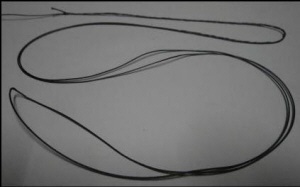
Tuna Knot to connect your double leader to Snap Swivel
Setting the drag at 1/3 of line breaking strain
Out riggers are not only used to get your lures out past the side of the boat, but also to elevate your lines to get a better angle of entry into the water, so it is no good to have them laying flat down, they must stand out at a 30 degree angle from the surface, you must also mount as high as possible on your boat.
I run 2 lines off my riggers, but I do not like running 2 separate riggers lines and run both my rigger clips of the same cord 600mm apart. The reasons for doing this is that when you need to clear lines it is much quicker to do so, and also lure tangles are greatly reduced and you lure is also running wider out in the strike zone. One can make use of fancy rigger release clips that are available on the market, but again I prefer the KISS philosophy and run the old tired and tested rubber bands.
When attaching the rubber band to the line I use the 3 turn method where we wrap 3 turns forward and then we wrap 3 turns back over the first 3 turns. This will keep your line straight and then we clip the 2 ends of the rubber band into the snap swivel clip on the rigger line.
You may have noticed that I have made no mention of using Tag lines on my out riggers, and this is because I do not use them as I see no advantage and they are more trouble than they are worth and they bring your lines too close into your wash putting your lures outside the strike zone. You also will not run 2 rigger lines successfully using tag lines.
Fighting Chair
Although a fighting chair is not completely essential, and one can make use of harnesses and fight stand up, it certainly makes fighting these large fish much easier and I highly recommend that you install one on your boat if you are serious about Marlin fishing. Fishing stand up with anything larger than a size 50 reel is extremely awkward and clumsy.
About the Lures
There are thousands of lures on the market and thousands of colour combinations; there is however no need to go by a thousand lures in a thousand different colours. You are far better off sticking to a core set of lures in a core set of colours and have more than 1 of each and learn how to get them working properly than to try using 10000 possible combinations.
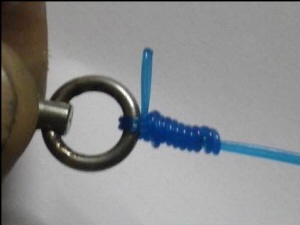
Like any fishing, confidence is a key factor and once you know how to use what you have properly you will already be confident and well on your way to a hook up. The lure design and colour is secondary to having a lure that is swimming and working properly. Again I like my KISS philosophy and like to keep things simple.
Colours
Lure colours on their own can make one confused but to keep things simple there are 3 main lure colour groups, light, bright and dark and if you can cover this in your spread you are already on your way to success.
- Dark Colours would be Black/Purple, Red/Black, Black/Pink and Black/Orange
- Light Colours would be Blue/White, Blue/Silver, Pink/White and Red/White
- Bright Colours would be Greens, Orange/Yellow and Fruit Salad.
The 4 main colours should always be in the spread, as these colours have proved over time to be the best Marlin producers worldwide and have proven themselves in specific positions time and time again, it has also been scientifically proven that Marlin can see and distinguish colour, whether they see it the way we do is unknown. These colours represent most bait fish, and in most places around the world the bait fish are all similar.
I prefer to run a parallel spread, but one can go the short side/long side route as this has always been successful. In our waters my most successful colour on my shot gun has been Orange/Yellow or a Fruit Salad variation, generally a bright colour works well in this position.
Keep your core 4 colours and lures and learn to get them working perfectly. Like Bruce Lee said, “I fear not the man who has practiced 10000 kicks, but I fear the man who has practiced 1 Kick 10,000 times”.
The same goes for your lures, you are far better off perfecting how to use a small range of core lures, than trying out 1000 combinations.
I have my lure sets in a few different sizes, and whilst they say big lures equals big fish, I can assure you that small lures also get big fish, one just needs to rig the smaller lures to handle a big fish.
It is also important to have similar head shapes for your lure sets so that they can all run properly together.
If you keep on changing lures and colours all the time whilst you on the water, you are significantly reducing your fishing time by keeping your lures out the water, and in doing so you are breaking fishing rule number 1.
When running my 5 line parallel spread I use 2 small birds on my inside rigger positions along with the bird on the shot gun, I do not run any rods off my corners and prefer my all my lines running off the riggers as the lures have a steeper angle of entry into the water and they run in clearer water on the edge of the wash, and I have had much better success this way with many more hook ups in these position as opposed to running a rod off the corner, having said this I fish a 7 line spread on my boat and cover all positions.
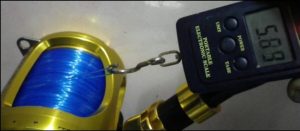
I also prefer running a parallel spread in our waters as we mostly have bigger seas and more often than not they are choppy and this spread has worked better for me than the traditional long/short corner spread.
I mostly use Hot Pink, Orange/Black or Red Head/White birds for these inside positions and a Green/Chartreuse or Red bird on my shot gun.

You never place larger lures behind smaller lures as this creates a blocking effect in your spread and the fish will not pass a large lure to take a smaller one, always go with the largest lure closest to the boat and then go smaller as the lures go further back.

